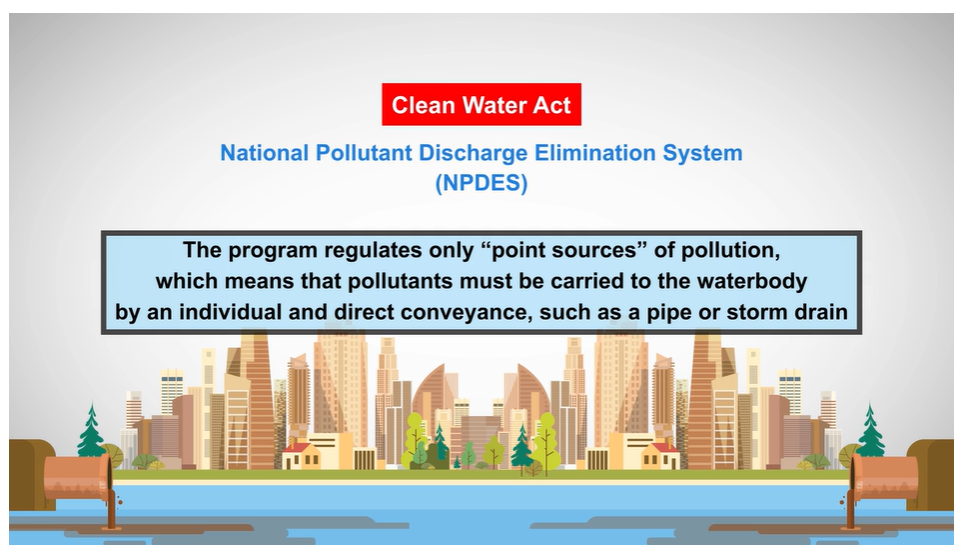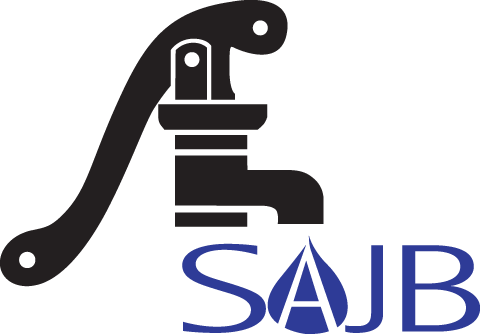Clean Water Act – Video
 Environmental Law:
Environmental Law:
The Clean Water Act
Click the link above to see a short (6:27) video on the Clean Water Act. The text of the video is provide below.
Thanks to Chloe and her mom Madeline for sending us a link to this informative video.
 The Clean Water Act
The Clean Water Act
In the summer of 1969, sparks from a passing train showered down upon a portion of the Cuyahoga River in Cleveland, Ohio. Rather than dissipating into the water as expected, the sparks ignited pollutants floating on the surface and set the river on fire – and not for the first time. This portion of the Cuyahoga River was heavily populated by industrial facilities that dumped waste directly into the water. The river caught fire so often that locals barely even took notice any longer; they simply put out the blaze and carried on as if nothing out of the ordinary had happened at all. [i]
The burning of the Cuyahoga River was not the only environmental disaster caused by unregulated dumping into our nation’s waters, but the publicity of the event finally drew the public eye to the issue. Federal lawmakers took action by passing the Federal Water Pollution Control Act Amendments of 1972, now commonly known as the Clean Water Act.[ii] Today, the Clean Water Act protects the quality of America’s waters through direct regulation of water pollutants and their points of origin.
The Clean Water Act prevents direct discharges of pollutants into the waters of the United States through a program known as the National Pollutant Discharge Elimination System (“NPDES”).[iii] The NPDES program has very strict requirements, but it only applies to certain types of water pollution. The program regulates only “point sources” of pollution, which means that pollutants must be carried to the water body by an individual and direct conveyance, such as a pipe or storm drain. Pollution aggregated over a larger space, such as agricultural runoff, is not regulated by the Clean Water Act. Further, the pollutant being discharged through the point source must reach “navigable waters,” meaning that the polluted water body must directly connect to larger rivers, lakes, and oceans used for shipping and commerce. [iv] Groundwater and water bodies unconnected to our nation’s larger surface waters (such as backyard ponds or drainage ditches) are protected by other statutes and not subject to Clean Water Act jurisdiction. Congress limited NPDES jurisdiction by defining the types of polluters and affected waters covered by the program. However, the law allows substantial latitude with respect to the nature or type of regulated “pollutants.” No matter how harmless they may be, all substances discharged into America’s surface waters by means of point sources are covered under the NPDES program. [v]
Those subject to NPDES regulations must apply for and receive a permit that authorizes the discharge of water pollution under very strict standards and in specifically limited amounts. Failure to comply with the terms of an NPDES permit or any other Clean Water Act requirement can give rise to civil or criminal liability. Any violation of the Clean Water Act, such as by discharging water pollution without a permit or by exceeding pollution levels authorized by an existing permit, gives rise to a potential penalty of up to $32,500 per violation, per day. A knowing or intentional violation of the Clean Water Act is a crime, carrying with it a possible sentence of 15 years in federal prison.[vi] Like many environmental programs, the Environmental Protection Agency (“EPA”) was initially charged with the enforcement of the NPDES program and other Clean Water Act requirements, but state governments may opt to administer and enforce NPDES requirements within their borders.[vii] The Clean Water Act also allows private citizens affected by point-source water pollution to sue polluters directly to enforce the law in an action known as a “citizen suit.”[viii] Citizen suits have played a critical role in the enforcement of the Clean Water Act and have greatly bolstered public participation and interest in the administration of the law.
All NPDES permit holders must utilize “Best Available Control Technology,” as determined by the EPA, to limit water pollution discharges. Beyond this baseline requirement, individual NPDES permits are tailored to integrate local water quality concerns. They do so by requiring polluters to adhere to mandatory Water Quality Standards (“WQS”) developed by state and federal agencies. These agencies assess how an affected water body is used by the public, and then they design water quality criteria that will ensure the site is suitable for this intended use.[ix] After all, a water body used for swimming and fishing should be held to more stringent health and safety standards than a waterway used only for commercial shipping. Waters that do not meet WQS are designated as “impaired,” and impaired waters are subject to additional protections.[x] For every pollutant exceeding the Water Quality Standards in an impaired water body, the governing agency must calculate a daily maximum amount of the pollutant that can be discharged into the water from all sources and still ultimately achieve the WQS.[xi] For example, if a water body fails to meet the WQS for mercury, regulators will determine how much mercury can be dumped into the water every day without exceeding health and safety limits. This “Total Maximum Daily Load” (“TMDL”) is integrated into each NPDES permit issued in the area, ensuring that the impaired waters in the region achieve the water quality necessary for all designated uses.
The focus of the NPDES program is the protection of surface waters connected to navigable bodies of water, but the Clean Water Act also protects other components of our water system. For example, anyone seeking to dredge or fill any part of a wetland must first secure a permit for the activity from the U.S. Army Corps of Engineers.[xii] If issued, a wetland dredge or fill permit will include specific requirements and limitations designed to protect the aquatic ecosystem. The Clean Water Act also regulates the operation of stormwater and sanitary sewer systems, as well as wastewater treatment plants.[xiii] Groundwater protection, though a critical component of America’s overall water pollution prevention system, is not included in the Clean Water Act but rather is addressed in other statutes.
The Clean Water Act is the keystone of America’s water pollution control system. Just a generation ago, the Cuyahoga River was so polluted that it regularly caught fire and no aquatic life could survive in its toxic waters.[xiv] After decades of careful planning and regulation, the river is now healthy enough to be used for swimming and fishing.[xv] All in all, the Clean Water Act is an important component in a suite of laws designed to protect our nation’s waters and aquatic ecosystems. Through cooperation between federal, state, and private citizens, the Clean Water Act has effected real progress in protecting human health and the environment from the impacts of water pollution.
Footnotes can be found on the video link at Law Shelf.
